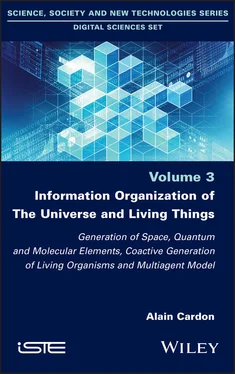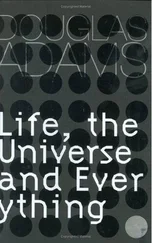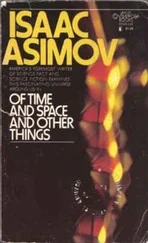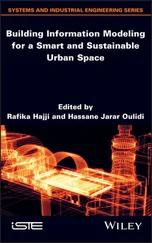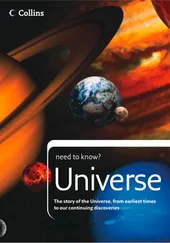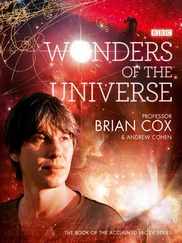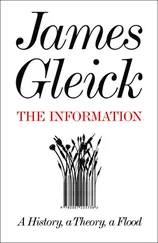We will use the following two different notions of the term process:
– The notion of a functional process which is seen as a vast movement of components exchanging information and energy, and producing the state of a certain system, as is the case of brains producing representations. We can thus speak of the process of emergence of a form of thought about something focused from a trigger generating intention.
– The much more precise notion of computer process, which is a small program wrapped in utilities and processed in a computer system that handles quantities of them simultaneously. We will then speak of swarms of processes to designate very numerous computer processes running in competition, this notion of swarm of processes being then close to the other notion of functional process.
Generally speaking, there are two categories of programs in computer science:
– The category of programs where it is a question of calculating a given function which is precise, well defined in advance, of strictly developing the calculations of all the necessary steps, which amounts to the execution of a structured set of state machines.
– The category of autonomous programs composed of multiple swarms of processes that will run in parallel, that will capture internal and external information, that will confront each other at certain times to exchange information, that will modify themselves, generate others and thus create new processes, to finally produce a global result that will be the most adapted to the situation that has evolved from its initial phase.
The second category is, for example, the state of all Internet users’ programs over a given period of time, when these programs themselves constantly consult and modify highly interactive Web sites. There are no permanent elements in this case and the problem cannot be based on an a priori decomposition into permanent elements.
The difference between the two categories of problems proposed lies in a fundamental point. There are programs in both cases, but in the second case, they will have to be constantly modified, rewritten and evolve, whereas in the first case, the software is used as it was conceived, with its initial capacities well-defined and non-variable during use. The second case must make one think of a certain form of autonomous, very abstract, artificial behavior.
1.3. Formation of the Universe in physical sciences
In mathematics there exists the domain of real numbers, which is a complete Archimedean body, whose use defines sophisticated and very powerful equations: the differential equations and the partial differential equations. This domain of real numbers using differential equations has allowed physicists to define very fine theories of the evolution of matter in the Universe. To define a differential equation, we first define the variables that characterize the observed system, and then we define the functions and their relations that should allow us to predict the evolution of the values of the variables, taking into account the values of certain constants. All this is put into a differential equation which must calculate the functions and thus obtain the characters of the evolution of a system starting from an initial state. This will be used in a very important way.
The physical sciences have been working for a very long time on a generation model for the Universe. The main model of the physical theory describing the creation of the Universe is the Big Bang model, posed by Alexandre Friedmann in 1925 and by Edwin Hubble in 1929, then very widely developed thereafter. This model posits the existence of a primordial nucleosynthesis, a very singular set of quantum elements with a considerable temperature that inhibits the propagation of photons that continuously interact with quantum particles. After a hundred seconds, the photons lose energy and the protons and neutrons are able to associate in a durable way to generate the first complex nuclei of the elements. From this initial set, the Universe developed by a considerable dilation while its temperature remained very high. The initial temperature of the Universe fell to reach 3000 degrees after 380,000 years, producing light by the emission of quantities of photons. This light of the cosmological background radiation (Peebles 1980) is observable today, when the temperature of the Universe is only 2.7 degrees above absolute zero. The light formed by the photons therefore propagated out of this initial set by constituting the cosmological background, it propagated in a space whose theory does not specify how it is formed or where it comes from (Klein 2010). The classical model posits that the generic elements of the galaxies were created by this very particular initial set and that the Universe was constituted by continuous dilation, its expansion.
The Big Bang theory thus posits that the Universe originated from a singular point 13.7 billion years ago, but there is no precise notion of the formation of space or time, only a notion of considerable energy at this initial moment in the form of photon fields and the activity of quantum elements. Physically observable matter appeared from this initial state at a very high temperature, with neutrons, protons and electrons in considerable numbers, the protons being assumed to be seven times more numerous than the neutrons. Then were formed, by combinations, nuclei of hydrogen and helium. This set of elements will not cease to expand very strongly in space, thus lowering its considerable temperature and allowing the activation of physical processes that will form the nuclei of many atoms.
All this is defined by differential equations with constants, variables and functions, and these are the equations that give us all the characteristics of this expanding universe. According to these equations formulating the notion of energy, the temperature of several billion degrees Kelvin drops in a few seconds to one billion degrees Kelvin. Then, protons and neutrons are able to associate to form heavy hydrogen nuclei by releasing photons. Some of these nuclei are able to attract an electron to form a hydrogen atom. Some hydrogen atoms are able to attract each a proton, a neutron and an electron from their neighborhood to form helium nuclei, the helium atom being four times heavier than the hydrogen atom. It is deduced in this theory that 99% of the mass of the Universe is formed during this process, being thus constituted mainly of hydrogen and helium.
It is well-observed that hydrogen is very present in the Universe and this leads us to the following result: a quarter of the mass of the Universe is formed of helium and three quarters of hydrogen atoms.
The scientific theory states that the matter in the Universe represents 5% compared to the empty space which is considerable, but it also states that there is dark matter which is six times more important than the visible matter and which allows the maintenance of the conformation of galaxies and their structures which otherwise would not cease to dilate and therefore could not exist. However, this dark matter has not been physically found or observed. The theory posits that there is 70% dark matter and 75% dark energy in the Universe, which are still undetectable with current observational equipment. In our model, we will pose a hypothesis specifying what dark matter is precisely. It is posed that the variations of density of matter will allow, by undergoing gravitational force, to form in the galaxies structures made up of stars and planets.
This description, describing how to generate the structures of material elements of all sizes, gives a very important place to chance. There is the chance of communications between protons and neutrons forming the first atoms, there is the chance of collisions between these atoms generating photons and constituting other atoms, then the chance of movements of atoms aggregating and forming small masses. There is finally the chance of the meetings of these small masses to form bigger masses, very big masses aggregating the smallest by the force of gravity, attracting to them the small ones and thus forming the stars and the planets.
Читать дальше
